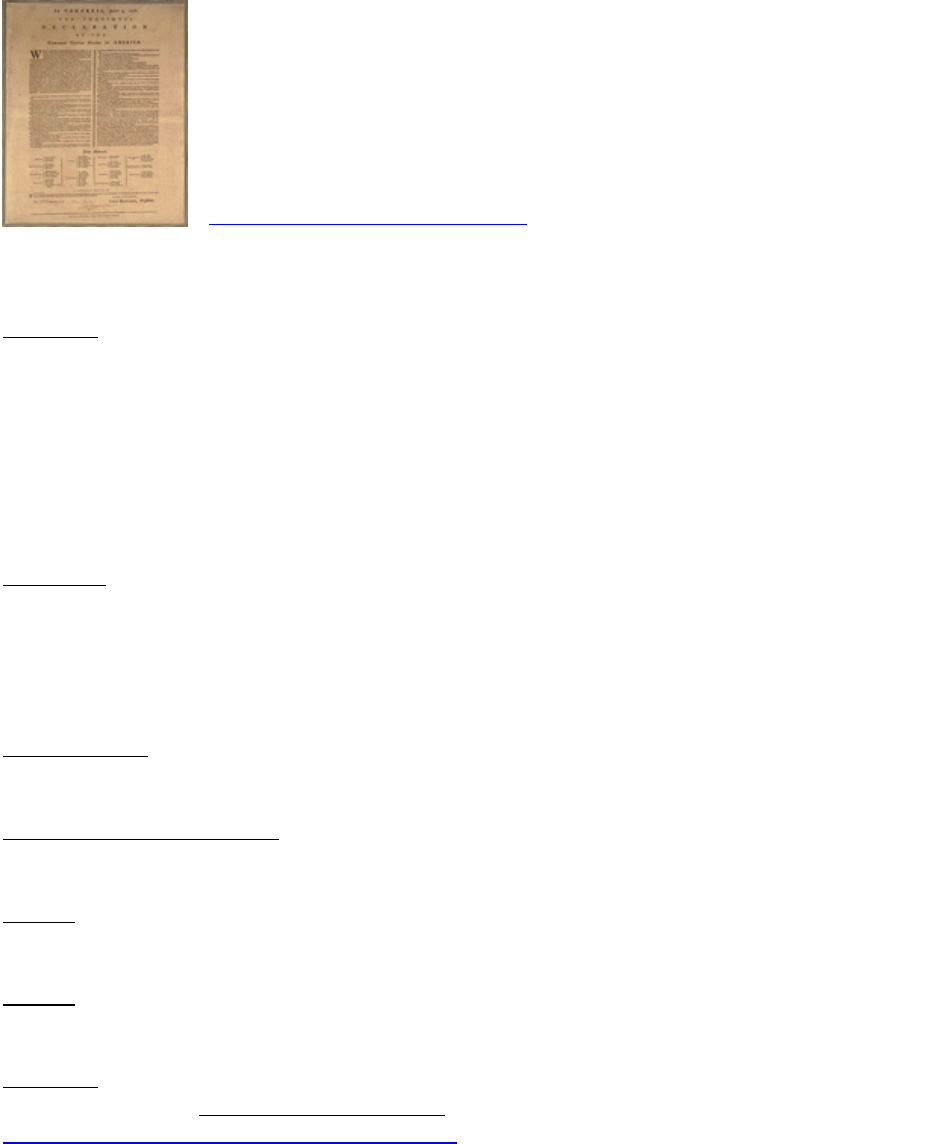
Winter 2009 Teaching with Primary Sources Quarterly
Learning Activity – Elementary Level
The Declaration of Independence: Differentiated Learning Activity
Declaration of Independence
Baltimore, Maryland: Printed by Mary Katharine
Goddard [1777]
Library of Congress Bibliographic record:
http://hdl.loc.gov/loc.rbc/bdsdcc.02101
OVERVIEW
Overview
The purpose of this activity is to engage students at various academic levels in examining the
Declaration of Independence. Below-level/ELL students will review the historical setting and
influential figures surrounding the writing of the Declaration. On-level students will examine
parts of the document. Above-level students will compare wording from various source
documents with key phrases from the Declaration. All learners will “rewrite” the Declaration of
Independence as they evaluate alternative wording choices in the document, and later defend
their decisions in class discussion.
Objectives
After completing this learning activity, students will be able to:
• Explain the importance of the Declaration of Independence
• Identify and/or analyze key concepts put forth in the Declaration of Independence
• Evaluate alternative wording choices in the Declaration and defend their decisions
Time Required
Two class periods
Recommended Grade Range
4-5
Topic/s
United States History/Government
Subject
Social Studies, Language Arts (Reading)
Standards
McREL 4
th
Edition Standards & Benchmarks
http://www.mcrel.org/compendium/browse.asp
The Library of Congress Page 1
http://www.loc.gov/teachers/tps/quarterly/differentiated_instruction/pdf/elementary_a
ctivity.pdf
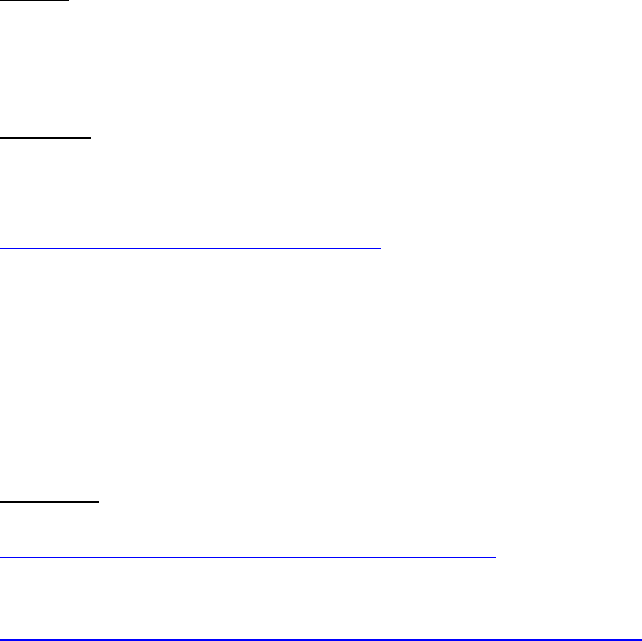
Winter 2009 Teaching with Primary Sources Newsletter
Learning Activity – Elementary Level
OVERVIEW (CONT’D)
Grades K-4 History
Standard 4. Understands how democratic values came to be, and how they have been
exemplified by people, events and symbols
United States History
Standard 6. Understands the causes of the American Revolution, the ideas and interests
involved in shaping the revolutionary movement, and reasons for the American victory.
Language Arts: Reading
Standard 7. Uses reading skills and strategies to understand and interpret a variety of
informational texts
Language Arts: Listening and Speaking
Standard 8. Uses listening and speaking strategies for different purposes
Thinking and Reasoning
Standard 6. Applies decision-making techniques.
Credits
Cynthia L. Buher, Whittier Elementary School, Wheaton-Warrenville CUSD #200, Illinois
PREPARATION
Materials
Have these materials ready before the activity:
Declaration of Independence image (introduction to lesson)
http://hdl.loc.gov/loc.rbc/bdsdcc.02101
• Prepare to display the image for discussion either by printing or projecting
Internet-ready computer for each student or pair of students
• Set-up access to electronic versions of worksheets and the Library of Congress Web site
Worksheets (1 copy for each student, determined by academic ability level)
• There are 3 levels of activities/worksheets (below-level/ELL, on-level, above-level)
Note: The above-level worksheet will require prior download of free Silverlight software from
the Library’s myloc.gov Web site to run the accompanying online activity.
Resources
America’s Library, Library of Congress Web site
http://www.americaslibrary.gov/cgi-bin/page.cgi/aa
Creating the Declaration of Independence online activity
http://myloc.gov/Exhibitions/creatingtheus/Pages/Interactives.aspx
*Requires Silverlight download
The Library of Congress Page 2
http://www.loc.gov/teachers/tps/quarterly/differentiated_instruction/pdf/elementary_a
ctivity.pdf

Winter 2009 Teaching with Primary Sources Newsletter
Learning Activity – Elementary Level
The Declaration of Independence: Rewriting the Rough Draft online activity
http://myloc.gov/Education/OnlineActivities/ExhibitObjects/DecOfIndependenceOnlineActivity.aspx
PROCEDURE
Activating Prior Knowledge:
1. Review what students remember about key events and influential figures from the
Revolutionary War period.
2. Ask students to share what they know about founding documents. Possible questions include:
What is a founding document? Why and when are founding documents written?
3. Show the image of the Declaration of Independence. Ask students to identify this document.
4. Discuss what students know about the Declaration of Independence. Possible questions include:
Why was it written? When was it written? Who wrote it?
5. Explain that students will learn more about the Declaration of Independence in this activity
by reading worksheets on the computer, using the worksheets’ hyperlinks to access the Library
of Congress Web site, and recording information on printed copies of the worksheets.
Activity:
1. Assign students to work at computers individually or in pairs.
2. Hand out the appropriate worksheets to students (based upon academic level):
Below-level/ELL learners: Declaration of Independence worksheet
• Students will access America’s Library to learn about the roles that Thomas Jefferson,
Benjamin Franklin and John Adams played in writing the Declaration of Independence.
On-level learners: This is It! worksheet
• Students will read parts of the Declaration of Independence, examining important
sections of the document.
Above-level learners: Deep Down Declaration worksheet
• Students will examine two of the five key phrases presented in the Creating the
Declaration of Independence online activity. They will read source documents and
choose the wording closest to Thomas Jefferson’s draft.
*Computers require free Silverlight download to run this online activity.
The Library of Congress Page 3
http://www.loc.gov/teachers/tps/quarterly/differentiated_instruction/pdf/elementary_a
ctivity.pdf

Winter 2009 Teaching with Primary Sources Newsletter
Learning Activity – Elementary Level
3. Hand out copies of instructions for the online activity, The Declaration of Independence:
Rewriting the Rough Draft, to all students upon completion of their worksheets.
All learners: A Big Decision directions
• Students will use the online activity to help edit Thomas Jefferson’s draft of the
Declaration of Independence.
4. Remind students to keep in mind the message that the colonists hoped to deliver to King
George III when choosing the wording for selected passages of the Declaration of Independence.
5. When all their edits are completed, ask students to select Compare versions and then select
Print to create a document comparing their version of the Declaration of Independence to the
final draft ratified by the Second Continental Congress.
6. As an entire class, discuss students’ discoveries about the Declaration of Independence.
Ask students to explain and defend their word choices from The Declaration of Independence:
Rewriting the Rough Draft online activity as part of the discussion.
EVALUATION
-- Active engagement in online activities
-- Accurate completion of worksheet
-- Active, thoughtful participation in culminating class discussion
The Library of Congress Page 4
http://www.loc.gov/teachers/tps/quarterly/differentiated_instruction/pdf/elementary_a
ctivity.pdf
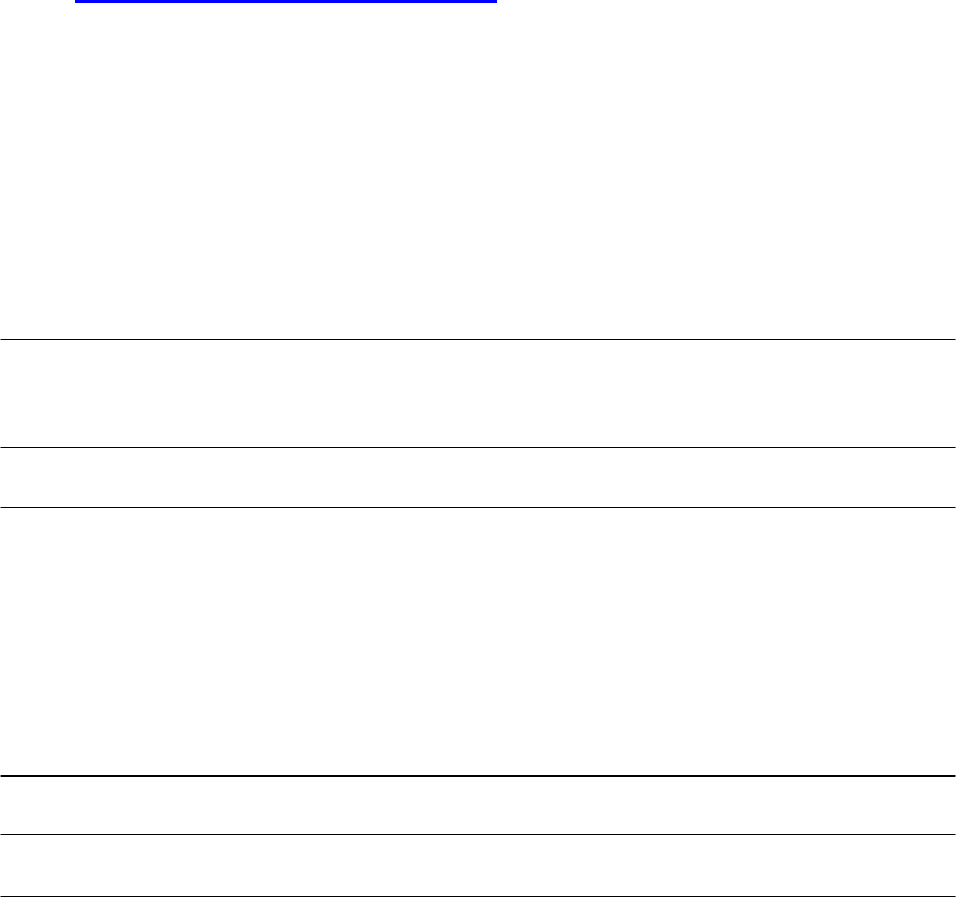
Name __________________________
Declaration of Independence
The Declaration of Independence is an important document in the
history of our country. We’ll read about the Declaration and some of the
people who influenced the beginnings of our new country.
Let’s meet some amazing Americans.
[CTRL + click to follow link to http://www.americaslibrary.gov/cgi-bin/page.cgi/aa ]
▪ Select U. S. Presidents
▪ Select Thomas Jefferson
Read about Thomas Jefferson and then answer these questions.
1. Who was the main author of the Declaration of Independence?
2. What other important jobs did Thomas Jefferson have in his lifetime?
▪ Select the story about Thomas Jefferson with the title, Th
e Most
Important Thing He Ever Wrote. Read all four pages.
3. How do we know that Thomas Jefferson wrote more than one draft of
the Declaration of Independence?
1

4. Why did the other members of the Continental Congress choose
Thomas Jefferson to write the Declaration of Independence?
5. What are the best-known words of the Declaration of Independence?
6. Why was the Declaration of Independence written?
7. What does the Declaration of Independence explain?
8. What two big ideas did Thomas Jefferson believe in?
Go back to Meet Amazing Americans
▪ Select Leaders and Statesmen
▪ Select Benjamin Franklin
Another man who was important during the time of the American
Revolu
tion was Benjamin Franklin. Benjamin Franklin was the only
person to sign three important documents.
2
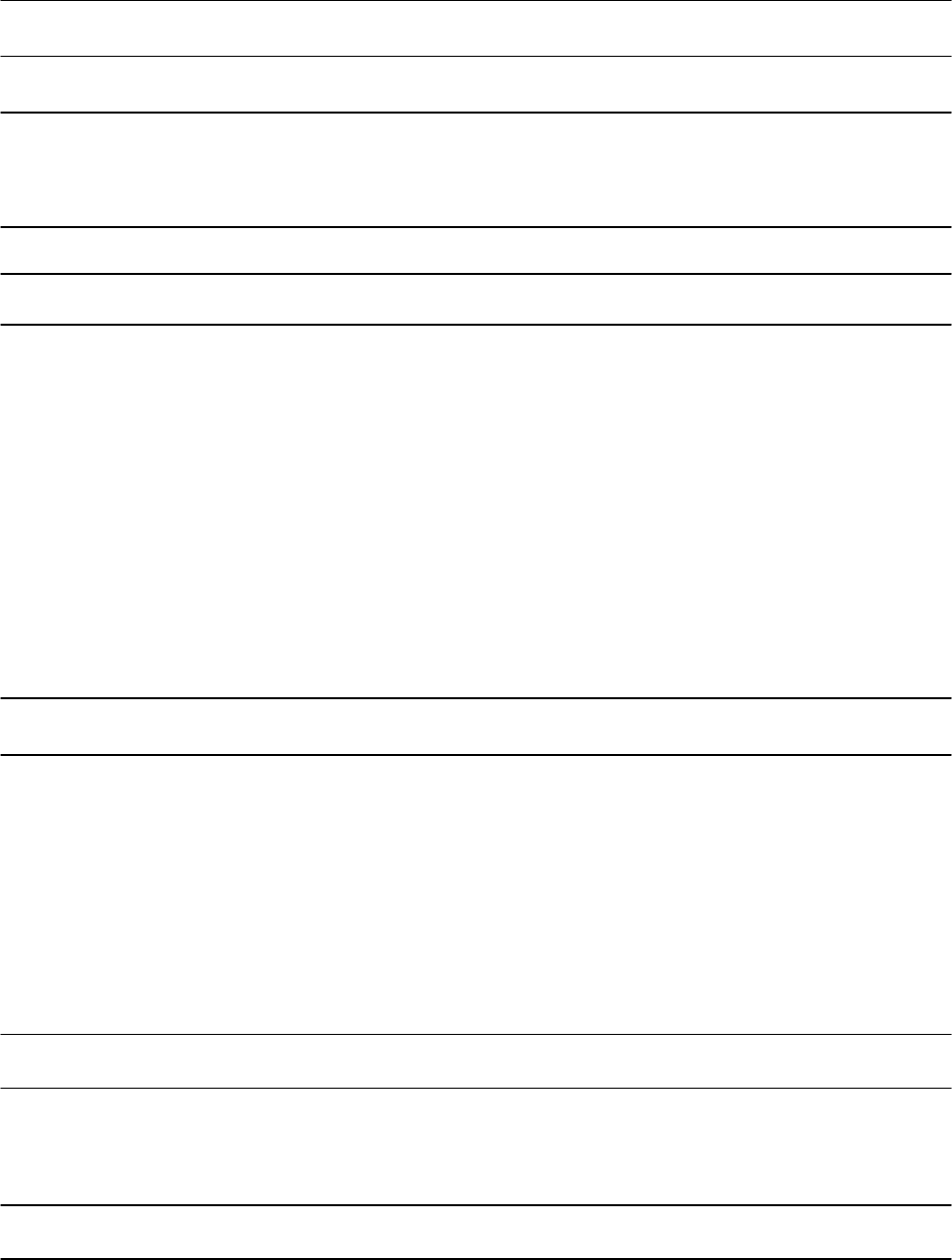
9. Which three documents did Benjamin Franklin sign?
10. Why are these three documents so important?
Go back to Meet Amazing Americans
▪ Sel
ect U.S. Presidents
▪ Select John Adams
John Adams was
anot
her very i
m
port
ant person in our country’s history.
11. What were two of John Adams’s important government jobs?
▪ Sel
ect another story, Thomas Jefferson’s Survives: Adams
’s Friend
(and Rival). Read all three pages.
12. What committee was John Adams on while he was in the
Continental Congre
ss? What was this committee’s job?
13. What did Thomas Jefferson and John Adams have in common?
3
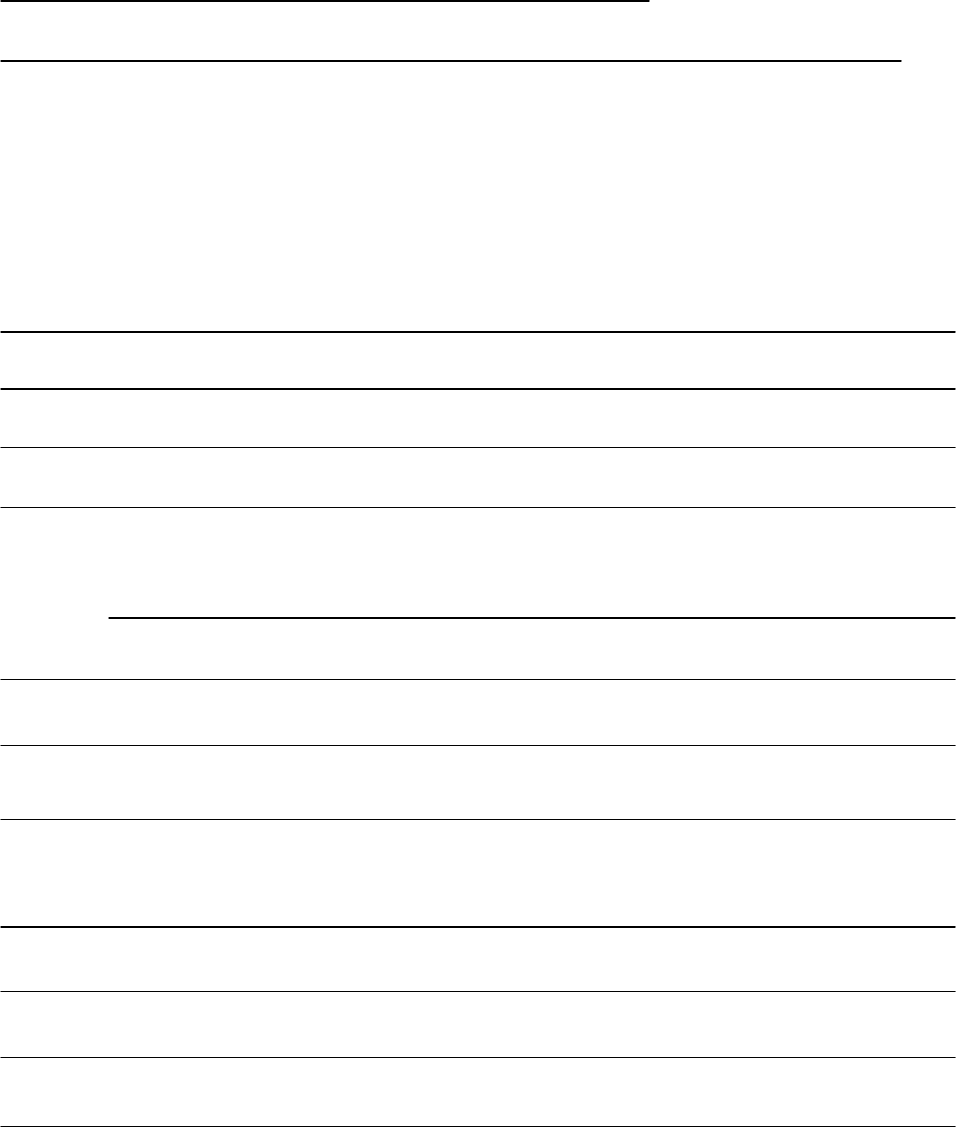
14. Thomas Jefferson and John Adams were the only two men who
and were elected
.
Now use what you’ve read about the Declaration of Independence and
some of the important people who helped to form our country to answer
these questions.
15. Why is the Declaration of Independence important?
16. How were Thomas Jefferson, Benjamin Franklin and John Adams
similar?
17. How were Jefferson, Franklin and Adams different?
4
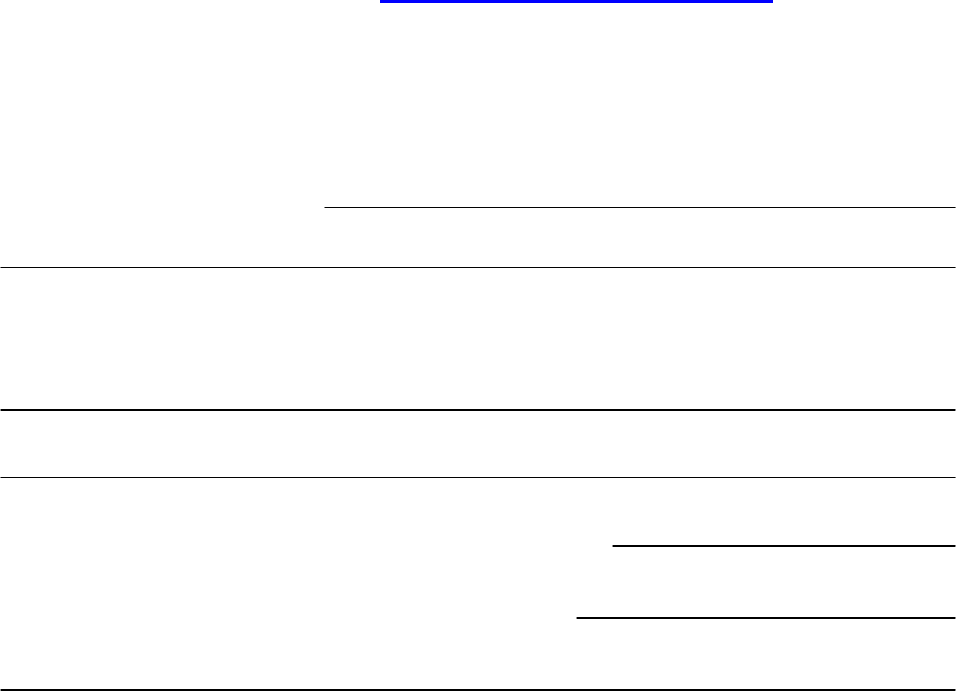
Name ________________________
This Is It!
Each of the 13 colonies sent representatives to the Second Continental
Congress to talk about issues that concerned them. These leaders
wanted to help make life better for the colonists. Important discussions
took place about the way that England was treating the
colonies. Not
everyone agreed on what to do. But after a lot of thinking and debating,
the Congress asked five representatives, called the Committee of Five, to
write a statement that told England’s King George III that the colonies
wanted to be their own country, not a British colony. The committee
decided that Thomas Jefferson should write the declaration.
Look at a printed copy of the Declaration of Independence
.
[CTRL + click to follow link to http://hdl.loc.gov/loc.rbc/bdsdcc.02101 ]
▪ Click on the image to enlarge it.
▪ Look closely at the Declaration and then answer these questions.
1. What is a declaration?
2. The Second Continent
al Congress did not call this document, “The
Declaration of Independence.” What did they call it?
3. What is the date at the top of this document?
4. What does the word “unanimous” mean?
1
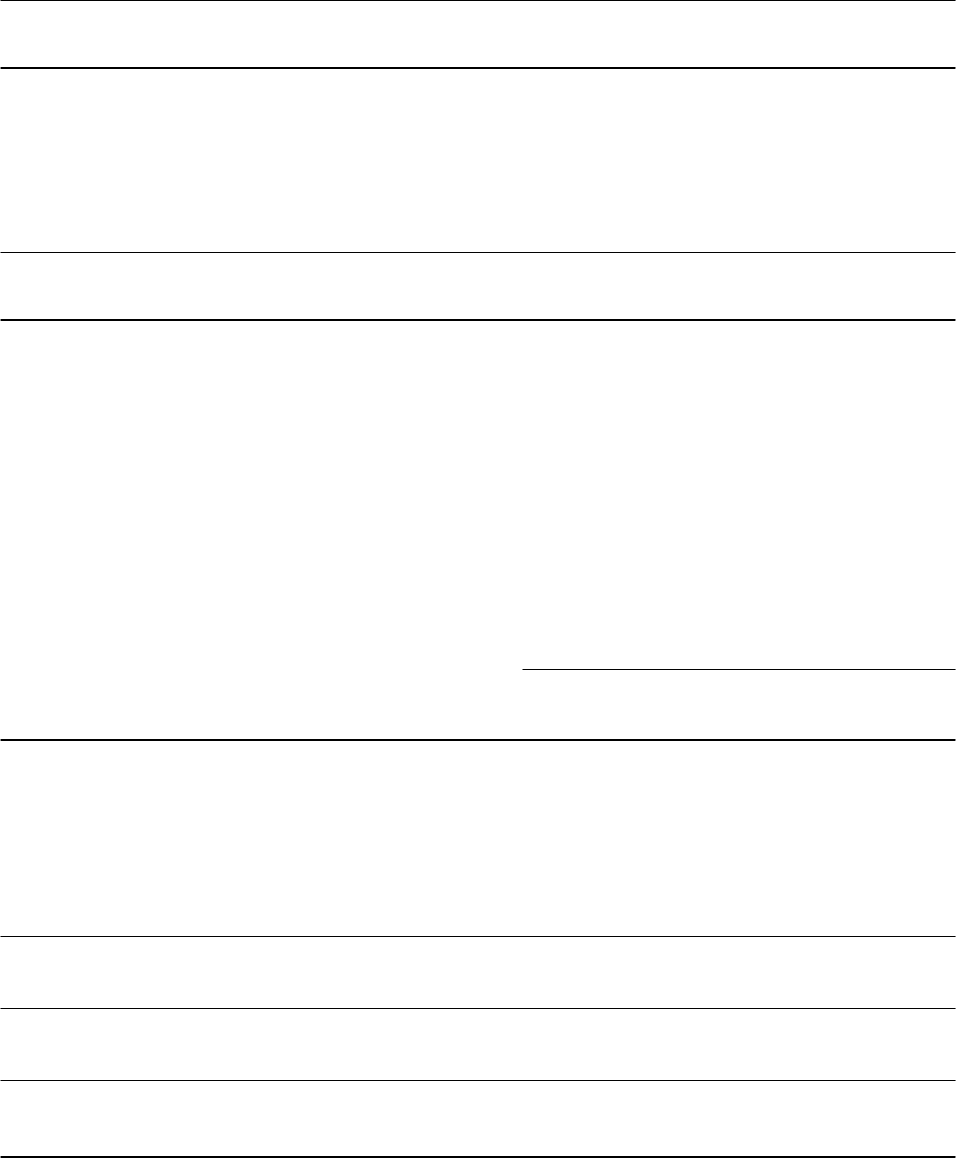
5. Whose large signature is at the bottom of the Declaration? What
was his role in the Continental Congress? How do you know?
6. At the bottom of the Declaration, each colony is listed with its
delegates to the Continental C
o
ngres
s. Why do you t
h
ink some
colonies sent more delegates than others?
▪ Select Back to Bibliographic Information
▪ Select View text
Read the introduction of the Declaration of Independence (the first
paragraph) and then ans
wer these questions.
7. What do you think is the main idea of the first paragraph? What do
the verbs “dissolve” and “entitle” mean?
8. The second paragraph is about human rights. Read the first sentence
of the second paragraph. Write this sentence in your own words. Use
context clues to help you understand words you may not know.
2

The last sentence in that paragraph seems to be saying to the world,
“Listen up and we’ll tell you why we want to be free of British rule.”
9. The first two paragraphs are followed by a list of complaints. In your
own words, writ
e at least five complaints listed in the Declaration that
help to explain why the colonists wanted independence from England.
10. The last paragraph states what th
e Second Con
tinental Congress
wanted. What words appear more than once in all capital letters to show
that they were declaring freedom?
11. The closing sentence states, “…we mutually pledge to each other our
Lives, our Fortunes, and our sacred Honour
.” What do you t
hink this
meant to these representatives? What were they promising to each other?
What problems or dangers might they face because of this promise?
3

Name _________________________
Deep Down Declaration
The principles set forth in the Declaration of Independence originated
from English, Scot
tish and American documents. Let’s learn about the
wording in these documents that Thomas Jefferson considered as he
wrote the Declaration of Independence
.
[CTRL + click to follow link to http://myloc.gov/Exhibitions/creatingtheus/Pages/Interactives.aspx ]
▪ Select Silverlight versio
n
▪ Select Overview from the menu at the t
op of the page
First, read the Overview that appears in the le
ft sidebar.
Next, notice the five phrases from the Declaration of Independence
listed across the top of the document:
“Pursuit of Happiness,” “Consent of the Governed,”
“All Men are Created Equal,” “Train of Abuses,” and, “Slavery”
▪ Sel
ect two of these five phr
a
ses t
o
explore in depth. For each phrase
you choose, follow these guidelines:
-Copy the phrase on your worksheet.
-Read the left sidebar for background info
rma
t
io
n.
-Click on Transcribe for a print
ed copy of the phrase
.
-At the bottom of the left sidebar, select Where did this come from?
-List the source documents for this phrase.
-Read the wording on each source document.
-Choose the wording that is closest to the Declaratio
n of Independence.
-Why do you think Thomas Jefferson chose that wording for his
document?
-Be prepared to discuss your find
ings with your classm
ates.
Let’s begin!
1
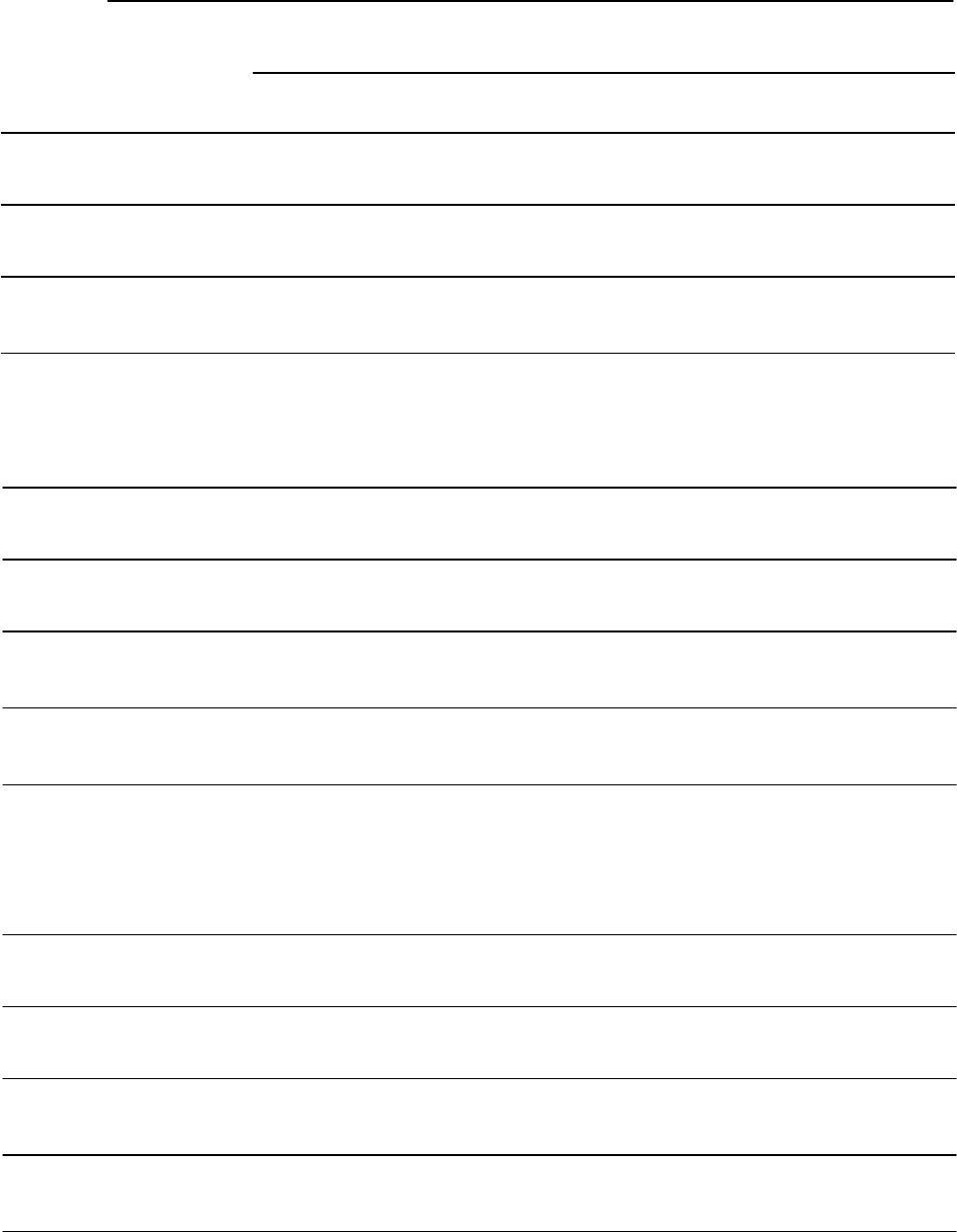
Phrase:
Source documents:
Wording that most closely matches that of the Declaration:
Why do you think Thomas Jefferson chose this wording?
2

Phrase:
Source documents:
Wording that most closely matches that of the Declaration:
Why do you think Thomas Jefferson chose this wording?
3

Name _________________________
A Big Decision
Now let’s travel back in time to the year 1776. Imagine that you are in
the room with the Second Continental Congress as they are reading
Thomas Jefferson’s draft of the Declaration of Independence. Peek over
their shoulders as they do some editing. Let’s see if you would have
agreed with their edited word choice or if you would have chosen
Thomas Jefferson’s words.
[CTRL + click to follow link to
http://myloc.gov/Education/OnlineActivities/ExhibitObjects/DecOfIndependenceOnlineActivity.aspx ]
▪ Select Launch Activity
▪ Select Start
You will see a draft of the Declaration of Independence with
conversation bubbles on it.
▪ Select one of the bubbles.
You will see two word choices: Thomas Jefferson’s original and the
Second Continental Congress’ final draft.
▪ Select the wording that you think best represents what the colonists
hoped for as they prepared to send this document to King George III.
▪ Select Submit
Repeat this for each of the conversation bubbles.
When finished, you can view your copy of the Declaration next to the
document that was approved by the Second Continental Congress.
The wording choices are highlighted in red.
▪ Print this page.
Be prepared to defend your choice of words in class as we engage in a
debate that may be similar to what happened in the meeting of the
Second Continental Congress in 1776.
1
